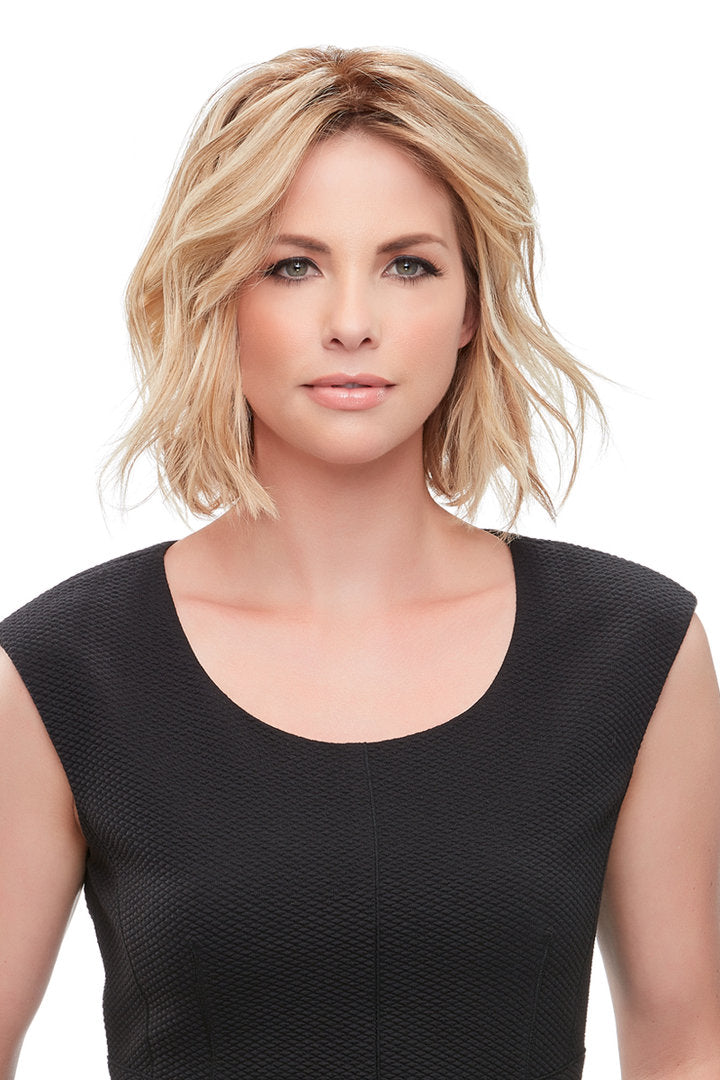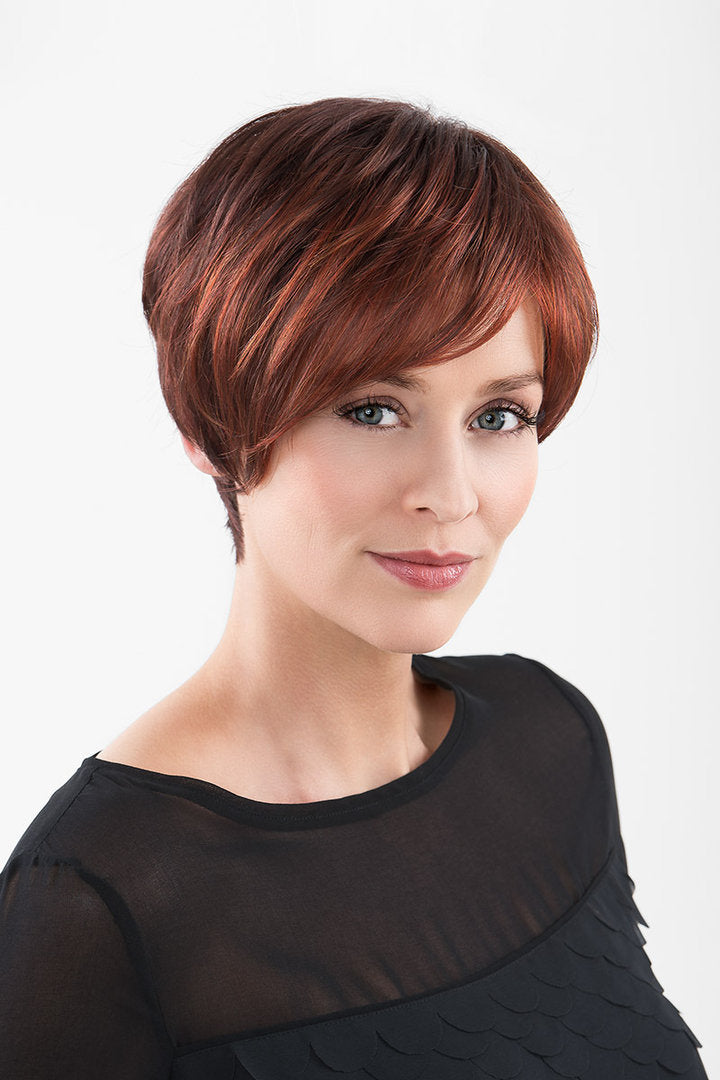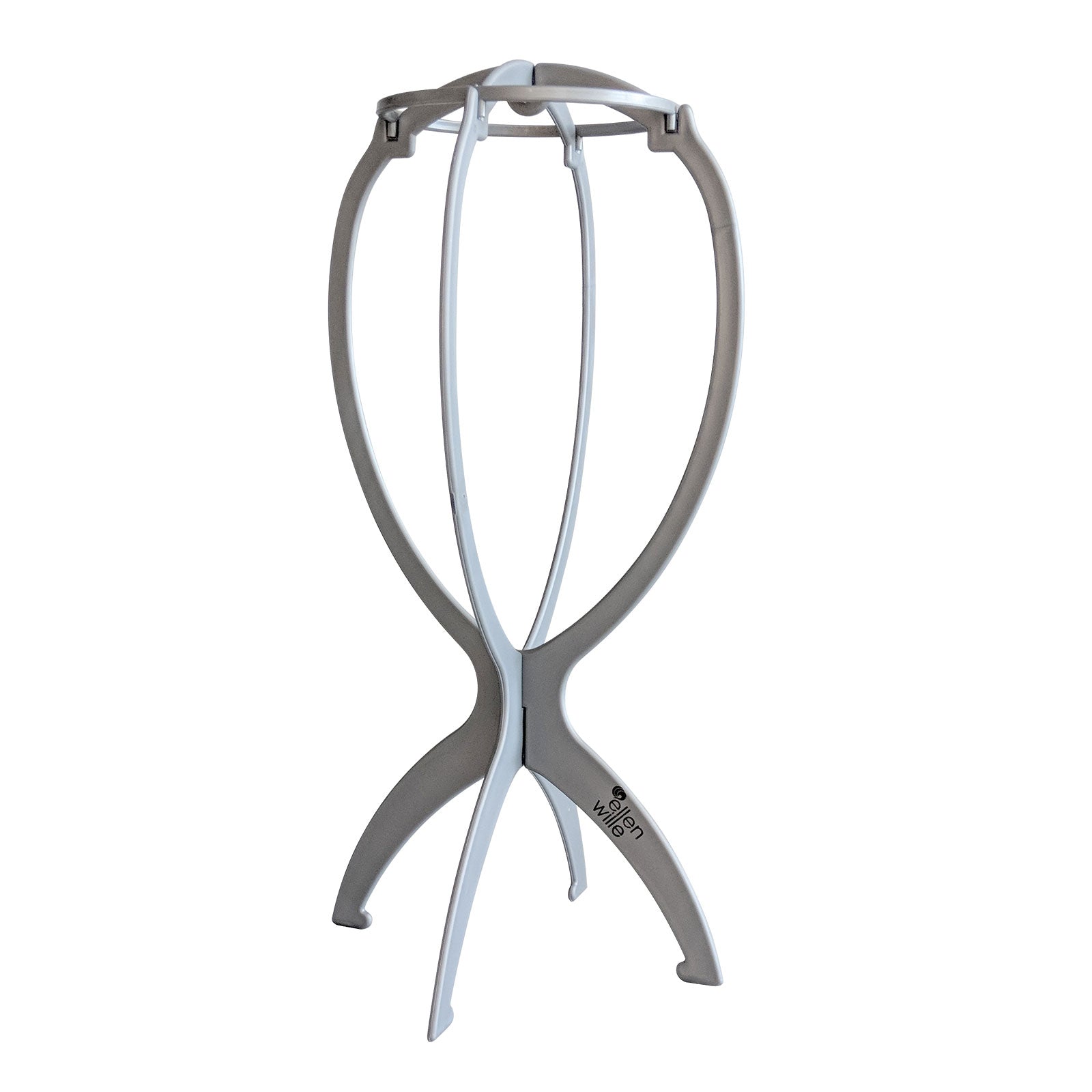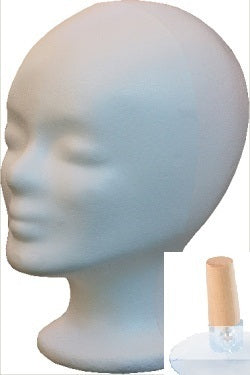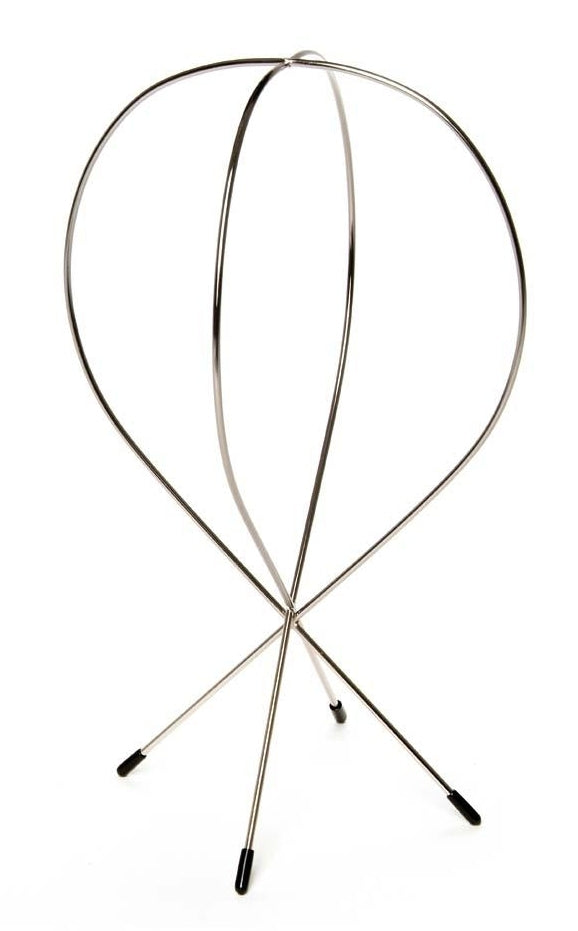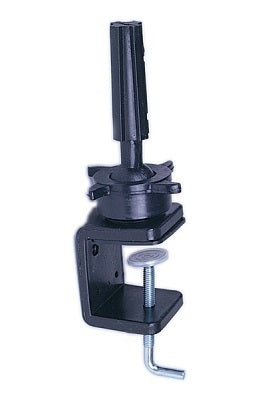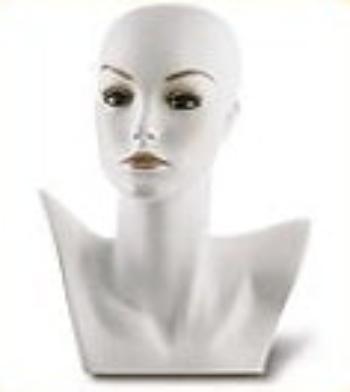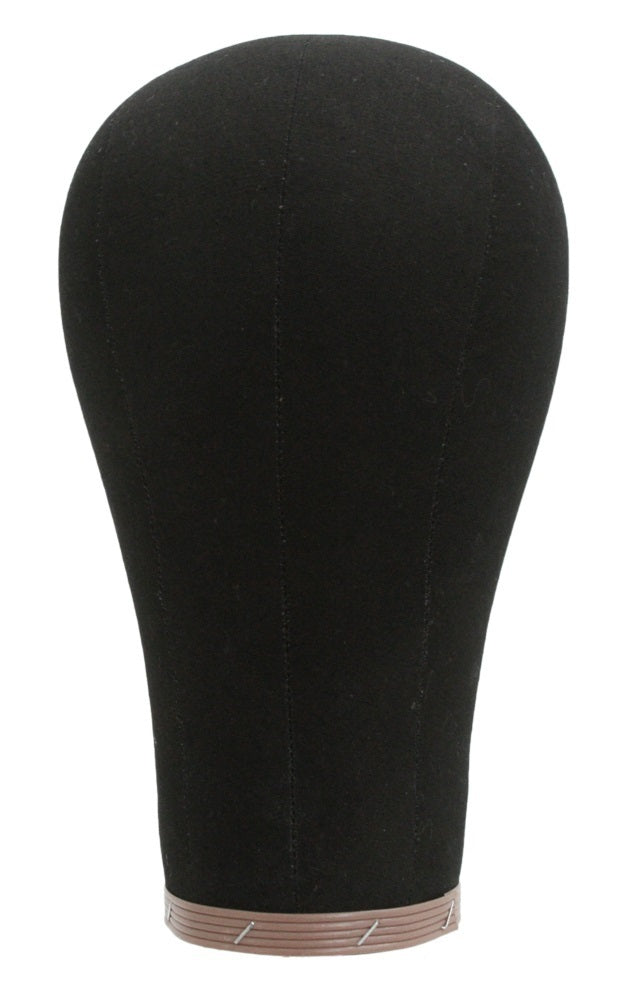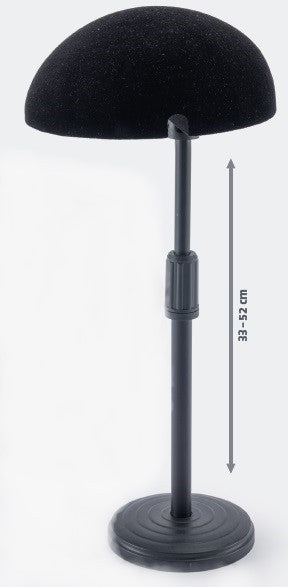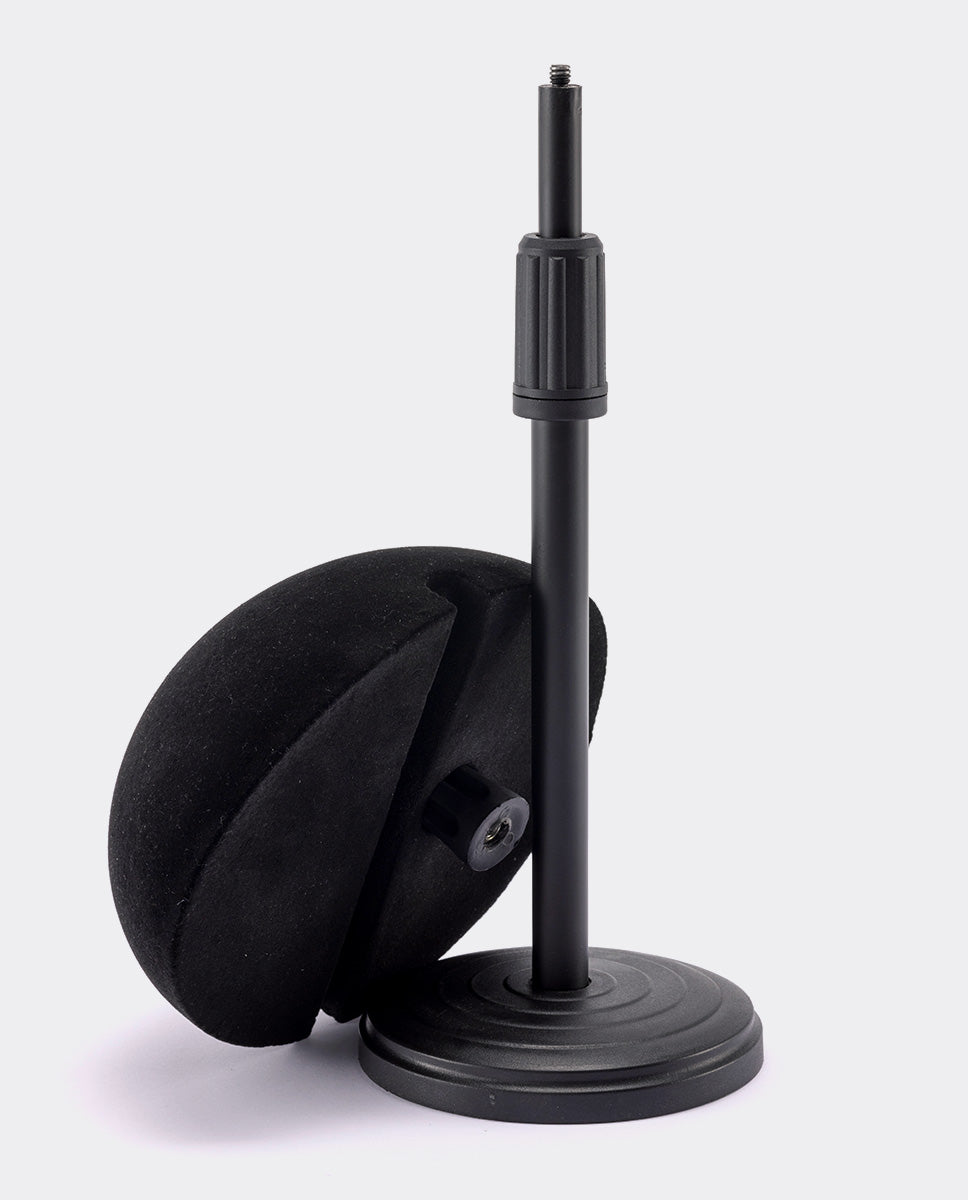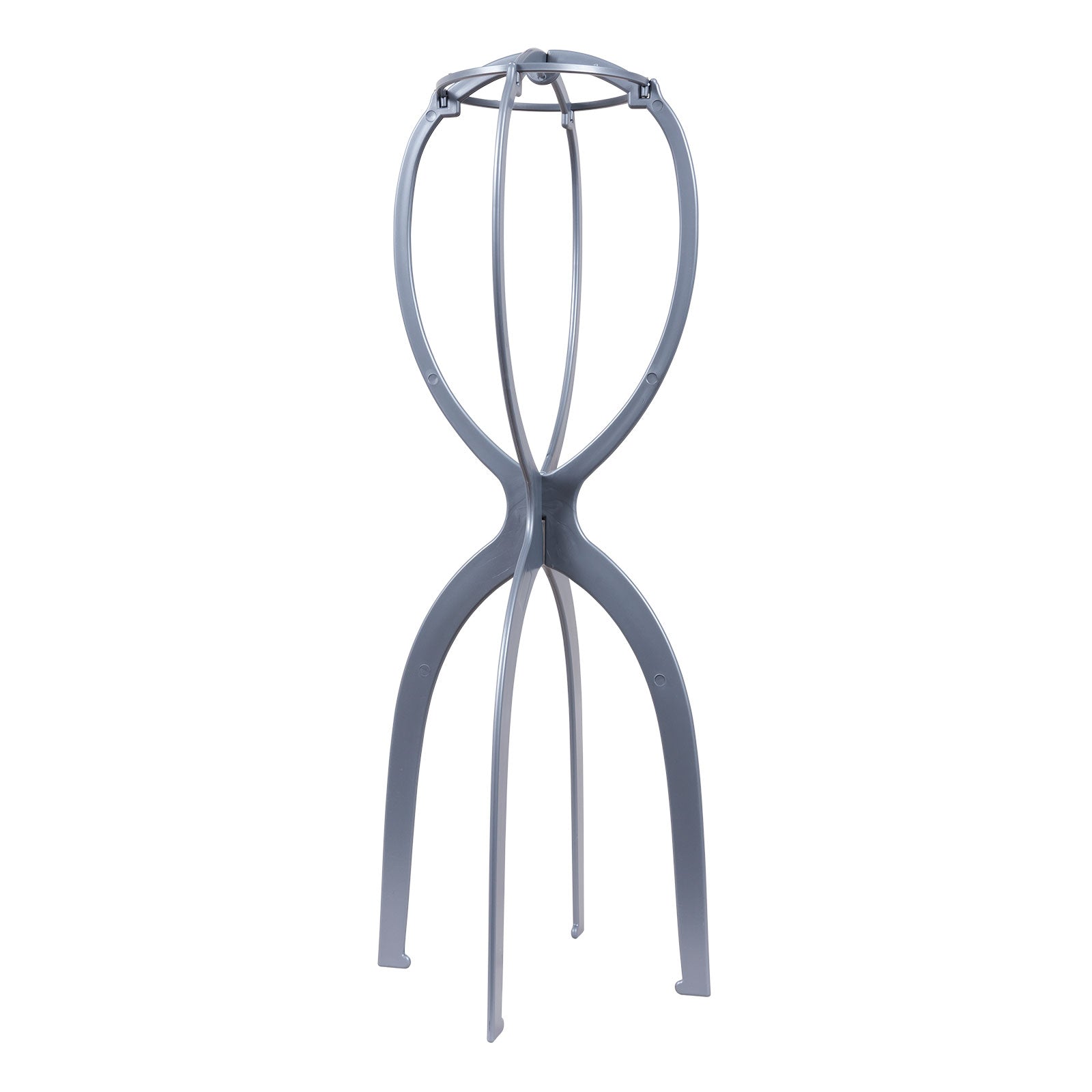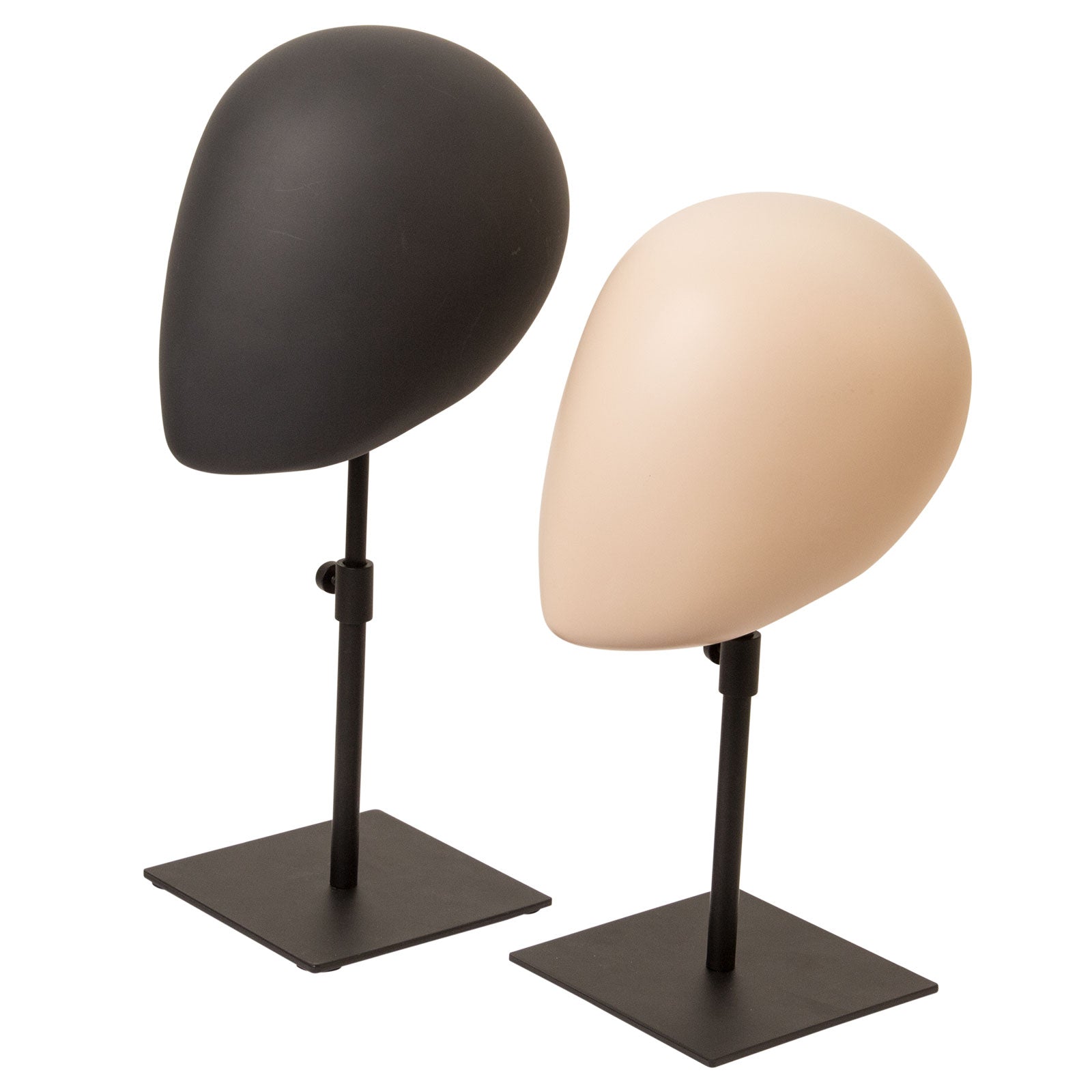Wig head: The indispensable companion for perfect wig care
You've finally found the perfect wig—one that gives you confidence and just the right style. But after a few weeks, it loses its shape, the hairstyle no longer holds, and the expensive piece looks like it's been through a storm. What many don't realize is that the right wig head could have prevented this. This inconspicuous helper is often the difference between a wig that looks perfect for a long time and one that quickly deteriorates.
Sort by
9 products
Filters
2 colors available
Warum ein Perückenständer mehr ist als nur Dekoration
Ein Perückenhalter erfüllt weit mehr Funktionen, als die meisten vermuten. Beim Trocknen nach der Wäsche bewahrt er die natürliche Kopfform der Perücke und verhindert unschöne Dellen oder Verformungen. Besonders bei Echthaarperücken ist das entscheidend - einmal eingetrocknete Falten lassen sich oft nur schwer wieder korrigieren.
Aber der wahre Wert zeigt sich beim Styling. Während Sie versuchen, Ihre Perücke auf dem eigenen Kopf zu frisieren, kämpfen Sie gegen die Schwerkraft und haben nur begrenzte Sicht auf das Ergebnis. Ein stabiler Mannequin Kopf hingegen ermöglicht es Ihnen, aus jedem Winkel zu arbeiten - Sie können Locken definieren, Scheitel perfekt ziehen und einzelne Strähnen präzise platzieren.
Was überrascht: Ein Perückenkopf zum Frisieren verlängert die Lebensdauer Ihrer Perücke erheblich. Ohne die ständige Reibung und den Druck beim Styling direkt auf dem Kopf bleiben die Fasern geschont und die Kappe behält ihre ursprüngliche Passform.
Styropor gegen Holz: Welcher Perückenkopf passt zu Ihren Bedürfnissen
Die Materialwahl beim Perückenkopf kaufen entscheidet über Komfort und Langlebigkeit. Perückenköpfe aus Styropor sind die beliebte Einstiegsvariante - sie sind leicht, günstig und für gelegentliche Nutzung völlig ausreichend. Ein Styropor Perückenkopf lässt sich problemlos mit Nadeln bestücken, um die Perücke während des Stylens zu fixieren. Bei normaler Nutzung (2-3 Mal pro Woche) hält ein Styropor-Modell etwa 6-12 Monate, bevor die Oberfläche zu stark beschädigt ist.
Die Kehrseite: Styropor ist wenig robust. Bei häufiger Nutzung entstehen schnell Löcher und Dellen, die das gleichmäßige Aufziehen der Perücke erschweren. Für Personen, die täglich mit ihrer Perücke arbeiten oder mehrere Stücke besitzen, ist das frustrierend. Zudem ist Styropor hitzeempfindlich - bereits ab 70°C können Verformungen auftreten.
Ein Perückenkopf aus Holz hingegen ist eine Investition in die Zukunft. Das stabile Material verzeiht auch intensivere Styling-Sessions und behält jahrelang seine Form - typischerweise 3-5 Jahre bei täglicher Nutzung. Experten bestätigen: "Holz arbeitet mit der Perücke, nicht gegen sie." Die natürliche Struktur des Materials nimmt Feuchtigkeit auf und gibt sie kontrolliert ab - ideal für den Trocknungsprozess. Holzköpfe vertragen Temperaturen bis 120°C, was sie für alle gängigen Styling-Geräte geeignet macht.
Überraschend praktisch sind auch kombinierte Lösungen: Ein Hutständer Kopf kann sowohl für Perücken als auch für die Hutsammlung verwendet werden und spart Platz im Ankleidezimmer. Für professionelle Anwender empfehlen sich verstellbare Modelle aus Buchenholz oder Kork-Holz-Verbundmaterial, die sich verschiedenen Kopfumfängen anpassen lassen.
Die richtige Größe wählen: Kopfumfang und Perückenkappen im Einklang
Ein oft übersehener Aspekt beim Perückenkopf kaufen ist die richtige Größenwahl. Standard-Perückenköpfe haben einen Umfang von 54-56 cm und passen zu den meisten handelsüblichen Perücken in Größe M. Für Petite-Kappen (52-54 cm) benötigen Sie einen entsprechend kleineren Kopf, während Large-Perücken (57-59 cm) einen größeren Umfang erfordern.
Die Passform ist entscheidend: Ein zu kleiner Perückenkopf überdehnt die Kappe und kann zu dauerhaften Schäden führen. Ein zu großer Kopf hingegen formt die Perücke nicht richtig aus, was beim Trocknen zu ungleichmäßiger Formgebung führt. Messen Sie vor dem Kauf den Umfang Ihrer Perückenkappen oder orientieren Sie sich an den Größenangaben des Herstellers.
Professionelle Perückenstudios nutzen oft mehrere Köpfe in verschiedenen Größen: 52 cm für Kinderperücken und sehr kleine Kappen, 54 cm für Petite-Größen, 56 cm als Standard und 58 cm für große Kappen. Diese Investition lohnt sich besonders, wenn Sie verschiedene Perückentypen besitzen.
Investition in die Langlebigkeit: Was ein Perückenkopf wirklich kostet
Die Rechnung ist verblüffend: Ein hochwertiger Perückenkopf kostet etwa so viel wie eine professionelle Perückenwäsche beim Friseur. Doch während die Wäsche einmalig ist, arbeitet Ihr Perückenständer jahrelang für Sie. Wenn Sie bedenken, dass eine gut gepflegte Perücke deutlich länger hält als eine vernachlässigte, amortisiert sich die Anschaffung schnell.
Perückenköpfe sind bereits ab etwa 15 Euro erhältlich, während hochwertigere Modelle zwischen 40 und 80 Euro kosten. Setzen Sie diese Kosten ins Verhältnis zu Ihrer Perücke: Bei einem 300‑Euro-Stück sind 50 Euro für optimale Pflege eine lohnende Investition.
Unabhängig vom Material oder Preis sind die Ausstattung und Handhabung wichtig: Achten Sie auf verstellbare Köpfe, stabile Standmöglichkeiten und glatte Oberflächen, die das Perückenhaar schonen. Besonders wichtig ist zudem die richtige Trocknung – sie trägt entscheidend zur Langlebigkeit Ihrer Perücke bei.
Der Perückenständer zum Trocknen: Mehr als nur Luftzirkulation
Nach der Perückenwäsche beginnt der kritischste Moment für Ihre Investition. Viele Trägerinnen legen die nasse Perücke einfach flach hin oder hängen sie über einen Stuhl. Das Ergebnis: ungleichmäßige Trocknung, Formverlust und im schlimmsten Fall Schimmelbildung in den nicht belüfteten Bereichen.
Ein spezieller Perückenständer zum Trocknen löst diese Probleme elegant. Die erhöhte Position ermöglicht Luftzirkulation von allen Seiten, während die Kopfform erhalten bleibt. Besonders bei lockigen oder welligen Perücken ist das entscheidend - die Sprungkraft der Locken bleibt nur erhalten, wenn sie in ihrer natürlichen Form trocknen können.
Die Trocknungszeit variiert je nach Material und Umgebungsbedingungen: Kunsthaarperücken benötigen bei Raumtemperatur etwa 4-6 Stunden, während Echthaarperücken 8-12 Stunden trocknen sollten. Bei hoher Luftfeuchtigkeit kann sich die Zeit entsprechend verlängern. Wichtig ist die komplette Durchtrocknung - auch die Kappeninnenseite muss vollständig trocken sein, bevor Sie die Perücke abnehmen.
Ein Profi-Tipp aus der Praxis: Stellen Sie den Perückenständer niemals in direkte Sonneneinstrahlung oder neben die Heizung. Die gleichmäßige Lufttrocknung bei Raumtemperatur ist schonender für die Fasern und bewahrt die Farbbrillianz länger.
Was viele übersehen: Der richtige Zeitpunkt zum Aufziehen auf den Perückenständer Kopf. Die Perücke sollte noch leicht feucht sein, aber nicht triefnass. So kann sie sich optimal an die Kopfform anpassen, ohne durch übermäßige Schwere zu dehnen.
Praktische Styling-Geheimnisse mit dem richtigen Perückenständer
Der Unterschied zwischen einer "okay" aussehenden und einer professionell gestylten Perücke liegt oft in der Vorbereitung. Ein stabiler Perückenständer zum Frisieren wird zu Ihrer dritten Hand - er hält die Perücke exakt dort, wo Sie sie brauchen, während Sie konzentriert arbeiten können.
Hier ein Geheimnis aus Friseursalons: Verwenden Sie Stecknadeln, um einzelne Partien der Perücke am Styropor Kopf zu fixieren, bevor Sie sie mit Hitze stylen. So können Sie präzise arbeiten, ohne dass Ihnen Strähnen ins Styling-Eisen rutschen. Bei Echthaarperücken ermöglicht das sogar komplexere Frisuren wie Hochsteckfrisuren oder kunstvolle Flechtwerke.
Wichtige Sicherheitshinweise beim Heat-Styling: Styropor-Köpfe dürfen nur bei niedrigen Temperaturen verwendet werden (maximal 70°C). Verwenden Sie bei höheren Temperaturen unbedingt Hitzeschutzmatten oder wechseln Sie zu einem hitzebeständigen Holzkopf. Testen Sie die Temperatur immer zuerst an einer unauffälligen Stelle der Perücke.
Ein weiterer Vorteil wird oft übersehen: der psychologische Effekt. Wenn Sie Ihre Perücke auf einem eleganten Perückenhalter präsentiert sehen, wächst automatisch die Wertschätzung für das Stück. Diese emotionale Bindung führt dazu, dass Sie bewusster mit der Pflege umgehen und letztendlich länger Freude an Ihrer Perücke haben.
Für Fortgeschrittene: Nutzen Sie verschiedene Perückenköpfe für verschiedene Zwecke - einen für tägliches Styling, einen zweiten für die Trocknung nach der Wäsche. Diese Trennung verhindert, dass Styling-Rückstände die Trocknung beeinträchtigen und ermöglicht gleichzeitiges Arbeiten mit mehreren Perücken.
Pflege und Wartung Ihres Perückenkopfes
Auch Ihr Perückenkopf benötigt regelmäßige Pflege, um optimale Dienste zu leisten. Styropor-Köpfe sollten wöchentlich mit einem leicht feuchten Tuch abgewischt werden, um Styling-Produktreste und Staub zu entfernen. Vermeiden Sie aggressive Reinigungsmittel, die das Material angreifen können.
Holzköpfe pflegen Sie monatlich mit einem speziellen Holzreiniger oder milder Seifenlauge. Lassen Sie das Holz anschließend vollständig trocknen und behandeln Sie es alle sechs Monate mit Holzöl, um Risse zu vermeiden.
Lagern Sie Ihren Perückenkopf an einem trockenen, staubfreien Ort. Bei längerem Nichtgebrauch decken Sie ihn mit einem Tuch ab. Überprüfen Sie regelmäßig die Stabilität - wackelige Ständer können Ihre Perücke beschädigen und sollten zeitnah ersetzt oder repariert werden.
Problemlösung: Häufige Herausforderungen meistern
Rutscht Ihre Perücke ständig vom Kopf? Das liegt meist an einem zu glatten Perückenkopf. Wickeln Sie ein dünnes Handtuch um den Kopf oder verwenden Sie spezielle Grip-Sprays für besseren Halt. Bei zu lockerer Passform helfen Schaumstoff-Pads, die zwischen Perücke und Kopf gelegt werden.
Ein wackeliger Ständer ist nicht nur ärgerlich, sondern kann auch gefährlich werden. Prüfen Sie alle Schraubverbindungen regelmäßig und ziehen Sie sie bei Bedarf nach. Bei abgenutzten Gewinden hilft oft etwas Schraubensicherung.
Wenn sich Nadelstiche im Styropor-Kopf häufen, können Sie die Bereiche mit Gewebeklebeband verstärken oder ein Nadelkissen aufkleben. So verlängern Sie die Nutzungsdauer erheblich.
Dellen und Verformungen in Styropor-Köpfen lassen sich teilweise mit vorsichtigem Erwärmen (Föhn auf niedrigster Stufe) wieder ausgleichen. Seien Sie dabei sehr vorsichtig - überhitztes Styropor kann giftige Dämpfe entwickeln.
Ihr optimaler Pflege-Rhythmus
Für maximalen Nutzen Ihrer Perücke und des Perückenkopfes empfiehlt sich ein strukturierter Pflegeplan:
Täglich: Perücke nach Gebrauch auf den Ständer setzen, Kämmen und Entstauben des Kopfes
Wöchentlich: Gründliche Reinigung des Perückenkopfes, Überprüfung der Stabilität, Austausch stark beanspruchter Nadeln
Monatlich: Intensive Reinigung bei Holzköpfen, Kontrolle aller beweglichen Teile, gegebenenfalls Nachölen der Mechanik
Alle 6 Monate: Grundreinigung und Wartung, Holzpflege, Überprüfung der Gesamtstabilität, eventueller Austausch von Verschleißteilen
Diese regelmäßige Pflege stellt sicher, dass sowohl Ihre Perücke als auch der Perückenkopf über Jahre hinweg optimale Dienste leisten.
Kontakt und Beratung
Bei La Peruca verstehen wir, dass jede Perücke mehr als nur ein Accessoire ist - sie ist Teil Ihrer Persönlichkeit und Ihres Wohlbefindens. Deshalb empfehlen wir unseren Kundinnen immer, gleich bei der Perückenbestellung an die richtige Pflege zu denken. Unser Team berät Sie gerne telefonisch unter 030/89409449 oder persönlich in unserem Berliner Showroom, welcher Perückenständer am besten zu Ihren Bedürfnissen passt.
Beginnen Sie noch heute mit der optimalen Pflege Ihrer Perücke: Wählen Sie den passenden Perückenkopf aus unserem Sortiment, befolgen Sie unsere Pflegetipps und erleben Sie, wie Ihre Perücke dauerhaft wie frisch vom Friseur aussieht. Kontaktieren Sie uns für eine individuelle Beratung oder besuchen Sie unseren Online-Shop für eine große Auswahl an hochwertigen Perückenköpfen und Pflegeprodukten.
Was ist ein Mannequin Kopf und wofür wird er verwendet?
Ein Mannequin Kopf ist ein modellierter Kopf aus Schaumstoff, Kunststoff oder Canvas, auf dem Perücken oder Haarteile befestigt werden können. Er wird zum Frisieren, Schneiden, Föhnen oder Aufbewahren genutzt und sorgt dafür, dass die Form der Perücke erhalten bleibt.
Welches Material ist für einen Perückenkopf am besten geeignet?
Für das tägliche Styling eignen sich Canvas- oder Styroporköpfe besonders gut. Sie sind leicht, stabil und ermöglichen das sichere Fixieren der Perücke mit Stecknadeln. Kunststoffköpfe sind ideal für die Präsentation oder als Deko-Variante.
Order up to three model and try them at home
14-day return policy
Free consultation
Secure payment methods


